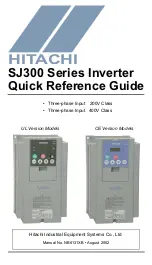
4
5. Lifting and transport
5.1 Transport and handling
The road transport of dangerous goods is regulated by the ADR
international agreement.
The Battery Unit is identified in the ADR document by the number UN 3480
(LITHIUM-ION BATTERIES) in hazard CLASS 9. The battery unit, in its
original packing, is compliant for road transport.
The ambient temperature allowed for transport is from -5°C to +40°C. The
manufacturer guarantees the characteristics of the REACT2-BATT only if
the aforementioned condition is respected.
• Transport of new batteries
The transport of Battery Units must comply with the general application
of the ADR. For any exemptions, please refer to paragraphs 1.1.3.1 and
1.1.3.6 of the ADR document.
• Transport of end-of-life batteries
Besides complying with the general application of the ADR, Battery
Units which are transported for disposal must comply with the following
guidelines:
Be packed in accordance with packing instruction P909 of 4.1.4.1 (original
package of REACT2-BATT)
The packages shall bear the following indication: “LITHIUM BATTERIES
FOR DISPOSAL”, in addition to other labels and indications provided for
in the ADR.
READ THE MANUAL –
E
For further details, please refer to the
ADR document: “European Agreement concerning the International
Carriage of Dangerous Goods by Road”, special regulation 377.
Contact FIMER for further details regarding the correct battery unit
disposal procedures.
5.2 Storage of REACT2-BATT
The storage period of the REACT2-BATT begins from the date, on which
the product is produced by FIMER (the production date is indicated on the
product label placed on the lateral surface of the chassis and expressed
as week of production - Year of production). In order to guarantee the full
operation of the system, REACT2-BATT shall be put into service within 6
months at most of the date of delivery by FIMER to the recipient of the goods.
In order to reduce risks during storage of the REACT2-BATT it must be
considered that:
• Do not stack more than 4 REACT2-BATT boxes.
• Keep the boxes upright. Do not store upside down or on the sides.
• Storage temperature shall be in the range of -20 to +25°C (6 month
storage time) or -20 to +45°C (3 month storage time).
• Storage humidity shall be less than 80% RH non-condensing.
• Capacity degradation will occur depending on storage time, temperature,
and humidity.
• To minimize capacity degradation, storing in a dry place with temperature
less than 25°C.
• For the rules on storing the battery, refer to the regulations in force in the
country concerned. In addition to the regulations in force in the Country of
interest, the following recommendations should be followed:
• Store the Battery Unit in its original packing (including the pallet), in a dry,
cool, well-ventilated environment and away from water.
• Do not open/tamper with the original packing.
• Do not crush/deform the packing.
• Equip the storage environment with appropriate PPE.
•
Never leave the REACT2-BATT in places where these may be
accidentally hit and damaged.
• Never leave the REACT2-BATT in areas with high fire risk or in high-
temperature areas.
• In the static position, the strapped batteries can be stacked up to a
maximum of 4 units.
• Handling and loading onto means of transport is only allowed with a stack
of maximum 2 units.
ATTENTION –
A
In case of damage or visible deformation of the cover
contact FIMER technical assistance service.
5.3 Lifting
FIMER usually stores and protects individual components by suitable
means to make their transport and subsequent handling easier.
Nonetheless, as a rule, it is necessary to turn to the experience of
specialised staff to take charge of loading and unloading components.
Where indicated and/or available, eyebolts or handles, which can be used
as anchorage points, are inserted and/or can be inserted.
The means used for lifting must be suitable to bear the weight of the
equipment.
Model
Weight (kg)
Lifting points
REACT2-BATT
50
4 (suggested in case of 2 operators)
LIFTING –
U
The number of required operators necessary to lift the
equipment must be in accordance to local regulations relating lifting
limits per operator
5.4 Unpacking and checking
Bear in mind that the packaging elements (cardboard, cellophane, staples,
adhesive tape, straps, etc.) may cause cuts and/or injuries if not handled
with care. They should be removed by suitable means and not left in the
hands of individuals who are not responsible (e.g. children).
The packaging components must be disposed of in accordance with the
regulations in force in the country of installation.
When you open the package, check that the equipment is undamaged and
make sure all the components are present.
ATTENTION –
A
If any defect or damage is detected, please stop,
contact the carrier and also promptly inform the FIMER Service
5.5 Disposal of battery unit
FIMER is responsible for the battery unit disposal. Contact the local FIMER
service for further details.
At the end of its life cycle, Battery Unit can be packed and transported
by trained personnel in accordance with Chapter 1.3 ADR - See section
“Transport of batteries at end of life”.
In case the original packing of the Battery Unit is no longer available, you
may request a new one by contacting the FIMER service.


























